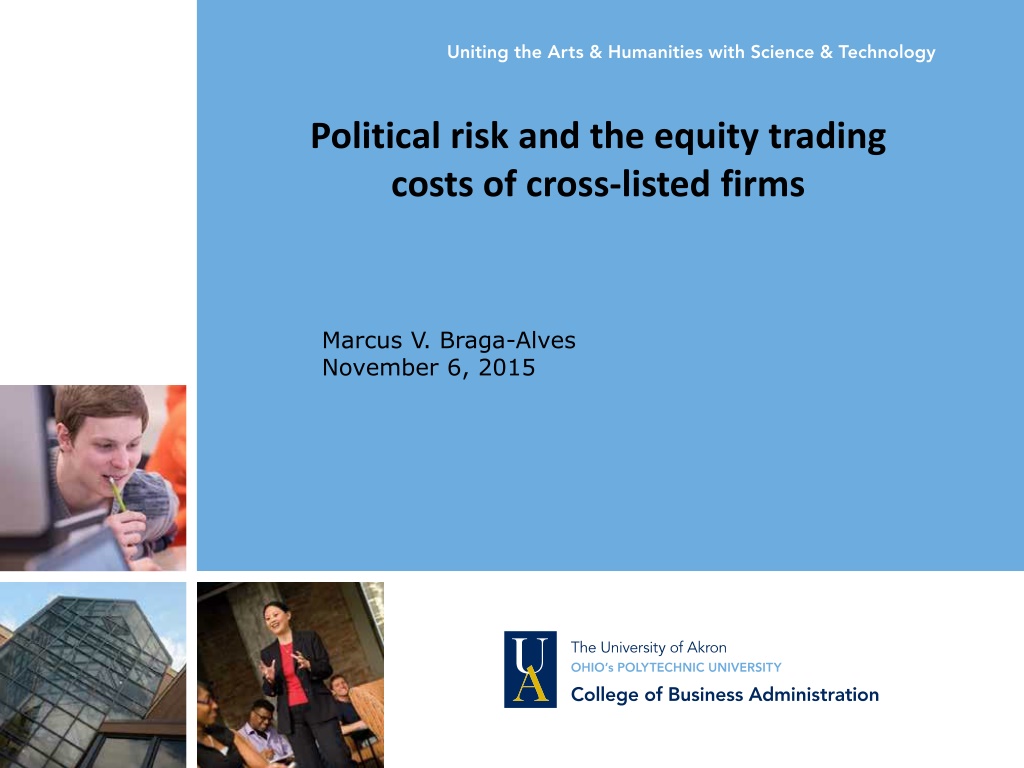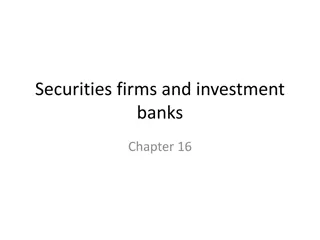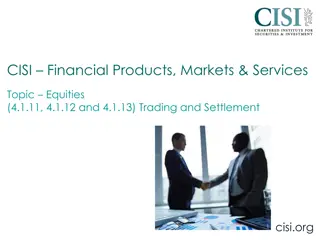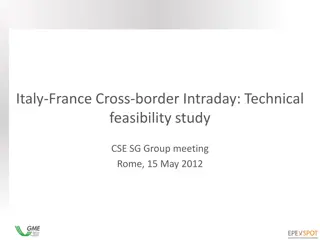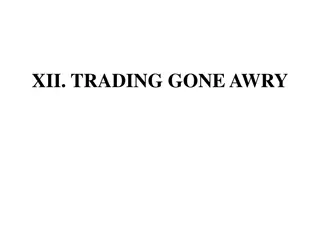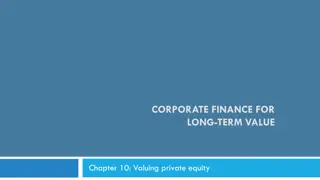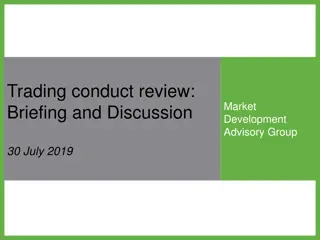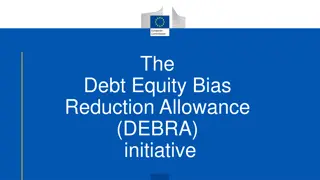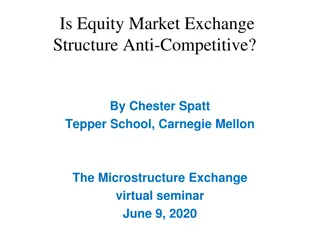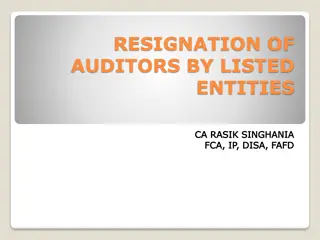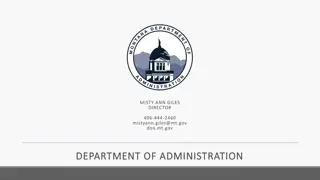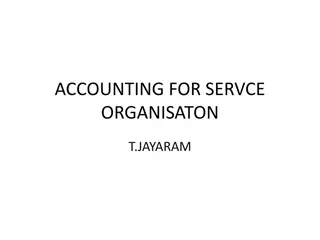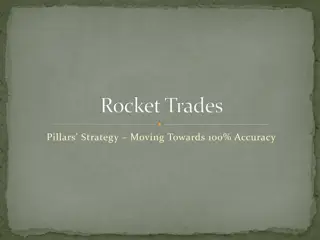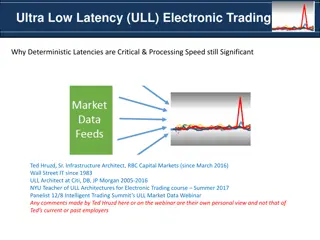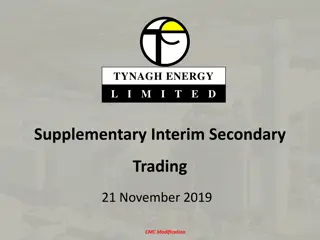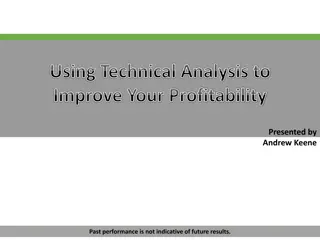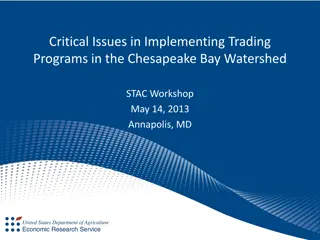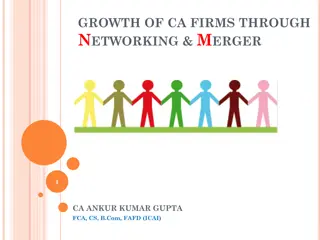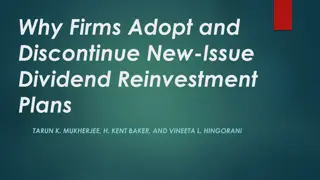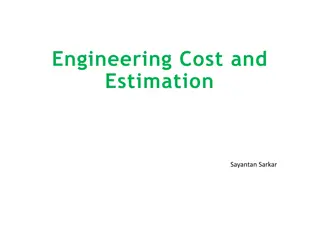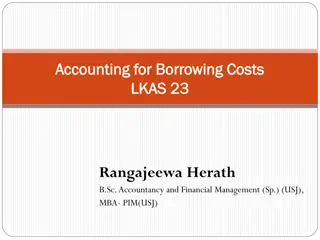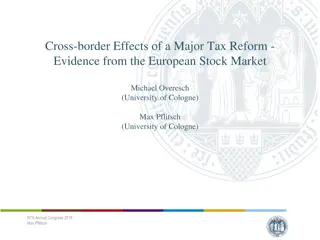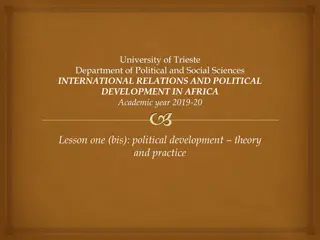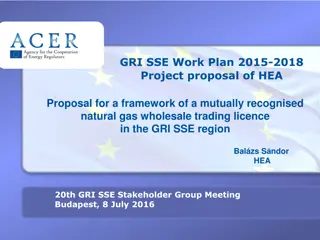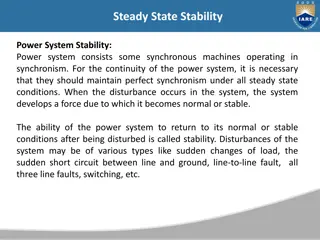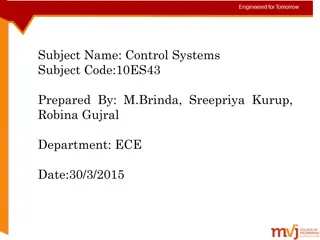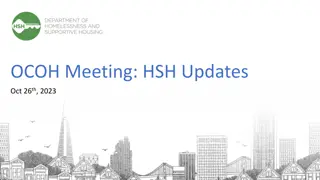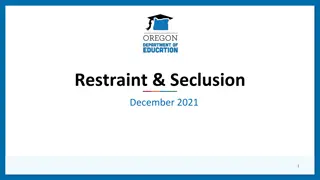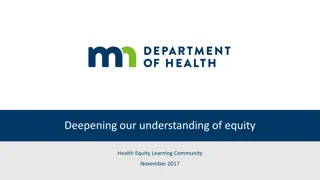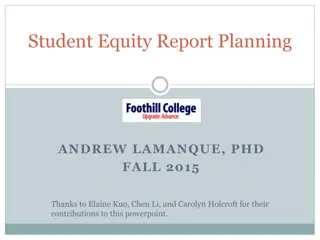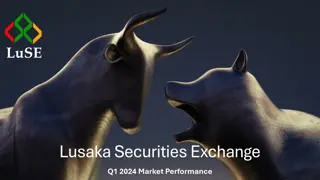Impact of Political Stability on Equity Trading Costs of Cross-Listed Firms
The research explores the relationship between political stability and equity trading costs of cross-listed firms, highlighting the impact of political institutions, liquidity, and investor protection. It delves into the importance of factors like quality of political institutions, transparency, and the cost of liquidity in equity markets. The findings suggest a negative correlation between political stability and transaction costs, emphasizing the significance of political risk assessment in financial markets.
Download Presentation

Please find below an Image/Link to download the presentation.
The content on the website is provided AS IS for your information and personal use only. It may not be sold, licensed, or shared on other websites without obtaining consent from the author. Download presentation by click this link. If you encounter any issues during the download, it is possible that the publisher has removed the file from their server.
E N D
Presentation Transcript
Political risk and the equity trading costs of cross-listed firms Marcus V. Braga-Alves November 6, 2015
Cross-listed firms Lower cost of capital Increased liquidity Information disclosure Investor protection Important costs SEC disclosure requirements US-GAAP reconciliations 2
Impact of Political Institutions Eleswarapu and Venkataraman (2006) relation between quality of political institutions and liquidity for cross-listed stocks This relation is stronger than the one between liquidity and accounting standards insider-trading laws enforcement judicial system efficiency anti-director rights 3
Unresolved Issues Law and finance literature investors are more willing to participate in equity markets with lower likelihood of expropriation Several issues and puzzles remain to be addressed My paper addresses one such issue: Why do we observe such a strong effect of political stability on the cost of liquidity? 4
Contribution to the literature Focus on the twelve different political and social attributes included in the political rating used by the authors Analysis of the relation between attributes and liquidity cost 371 non-US stocks Traded on NYSE between Jan and Mar 2011 Significant changes in the US equity market since 2002, but our challenge remained the same: to minimize the total cost of trading 5
Main findings We find a negative relation between political stability and equity transaction costs Trading costs corruption military in politics law & order ethnic tensions bureaucracy quality Adverse selection military in politics law & order ethnic tensions 6
Law and finance literature La Porta, Lopez-de-Silanes, Shleifer, and Vishny (1997, 1998) legal institutions, capital markets and ownership Hail and Leuz (2006) legal institutions and cost of capital Coffee (1999) cross-listed firms bond themselves to stronger securities laws 7
Law and finance literature La Porta, Lopez-de-Silanes, Shleifer, and Vishny (2000) US institutions impose only limited constraints Licht (2003) SEC allows foreign issuers exemptions Siegel (2005) law enforcement and local legal institutions 8
Political rating components 7. Military in Politics 8. Religious Tensions 9. Law and Order 10.Ethnic Tensions 11.Democratic Accountability 12.Bureaucracy Quality 1. Government Stability 2. Socioeconomic Conditions 3. Investment Profile 4. Internal Conflict 5. External Conflict 6. Corruption 9
Equity Trading Costs Bid-ask spread inventory risk order handling adverse selection costs Effective spread trades occur within or outside the quotes Price impact information asymmetry across traders 10
Equity Trading Costs Percentage effective spread 100 x 2 x Sit x (Pit Mit)/Mit Percentage price Impact 100 x 2 x Sit x (Mit+5 Mit)/Mit Pit is the transaction price Mit represents the midpoint quote, Mit+5 is the midpoint quote at least 5 minutes after time t Sit equals +1 for a buyer-initiated order and -1 for a seller- initiated order 11
Sample We start with the 424 non-US issuers listed on the NYSE as of December 31, 2010 47 countries represented We eliminate flags of convenience not the primary common stock without data in the NYSE TAQ database Our final sample consists of 371 non-U.S. issuers 37 different countries Sample period: January to March 2011 12
Table 1, Panel A Most issues are from China (75) and Canada (73) Lowest effective spread and price impact for Denmark (0.0336% and 0.0112%, respectively) Highest effective spread (0.6703%) for Mexico and highest price impact for Israel (0.4796%) Lowest political risk for Finland (92) and highest for Turkey (57) None of the countries in our sample would be classified as having very high political risk 13
Table 1, Panel B Mean (median) effective spread is 0.2108% (0.0897%), and price impact is 0.1006% (0.0378%) Standard deviation is 0.3092 and 0.1975, respectively The mean (median) political risk rating for the sample is 74.4 (77.0) the average (median) country is classified as having a low political risk according to the ICRG methodology 14
Table 2 9.6 (6.9) percent of the variation in effective spread (price impact) can be explained by the variation in the political risk rating Between 9.8 and 0.3 (6.7 and 0.3) percent of the variation of effective spread (price impact) can be explained by an individual attributes Corruption and government stability, respectively, are the attributes that explain the highest and the lowest percentages 15
Table 3, Panel A We regress percentage effective spread on the political risk rating and on rating components Statistically significant corruption, military in politics, law & order, ethnic tensions, bureaucracy quality 16
Table 3, Panel B We regress percentage price impact on the political risk rating and on rating components Statistically significant military in politics, law & order, ethnic tensions 17
Extreme market movements NYSE designated market maker reasonable level of liquidity fair and orderly market Days when returns move two standard deviations from the sample period mean Jan 2011 and Dec 2011 We were able to define eight extreme down days and six extreme up days Higher adverse selection risk Higher inventory risk 18
Table 4, Panel A We regress percentage effective spread on the political risk rating and on rating components for extreme up days Statistically significant law & order, ethnic tensions, democratic accountability, bureaucracy political risk rating, socioeconomic conditions, investment profile, corruption, military in politics, 19
Table 4, Panel B We regress percentage price impact on the political risk rating and on rating components for extreme up days Statistically significant None 20
Table 5, Panel A We regress percentage effective spread on the political risk rating and on rating components for extreme down days Statistically significant military in politics, law & order, ethnic tensions, democratic accountability, bureaucracy quality 21
Table 5, Panel B We regress percentage price impact on the political risk rating and on rating components for extreme down days Statistically significant government stability 22
Conclusion The effect of political and social attributes on trading costs in periods of greater volatility is at least as important as, if not more important than, in periods of normal volatility, But this effect is generally not significant on adverse selection costs in periods of extreme price movements. 23
Questions? 24
